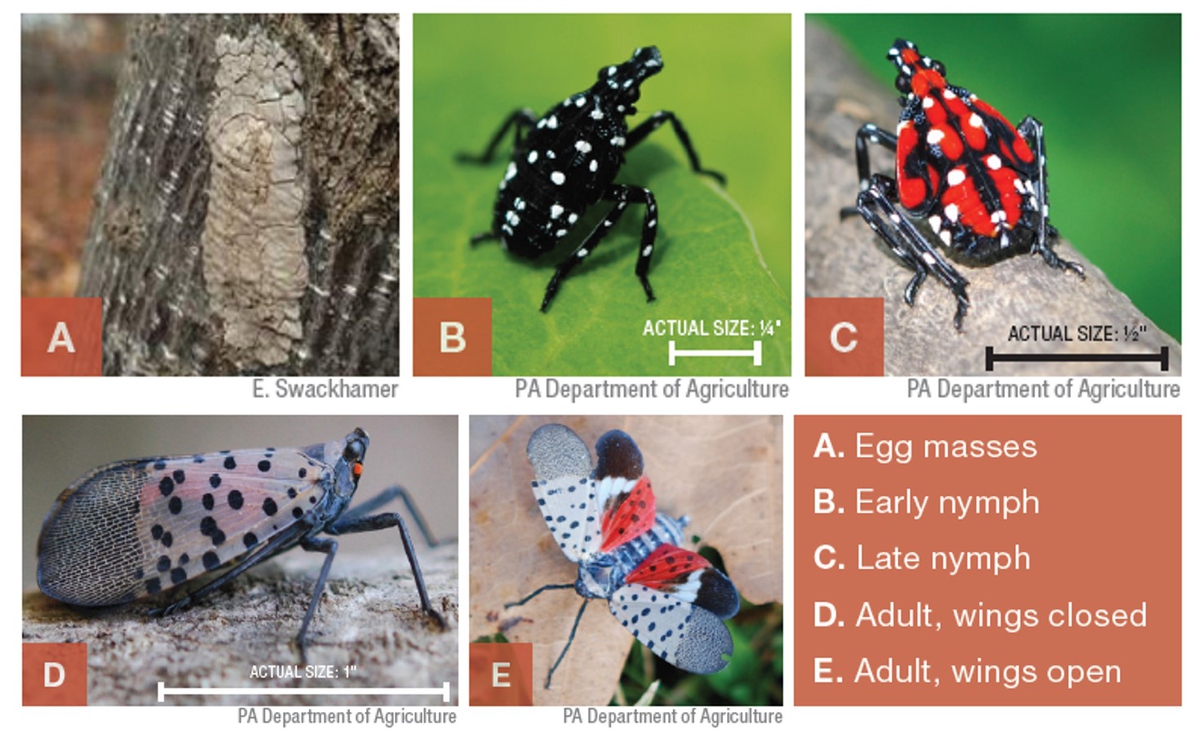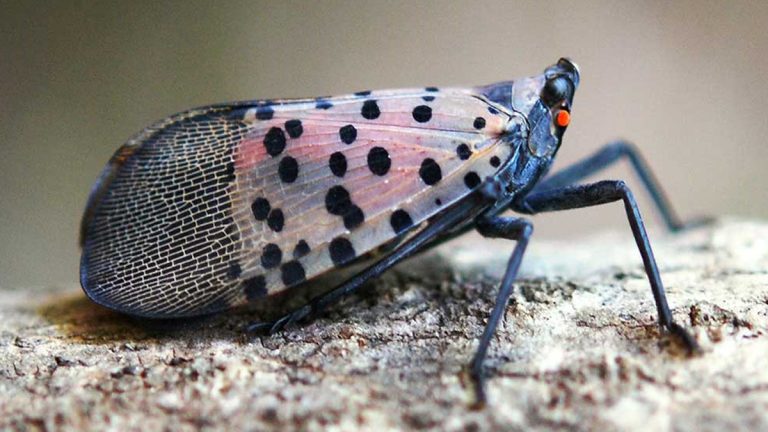News

The Spotted Lanternfly
Article written by Marianna Quartararo
In the last several years, a new insect pest has been making its way into our area; Spotted Lanternfly (SLF) (Lycorma delicatula). Despite the common name, this insect is not a fly but a member of the plant hopper family (Fulgoridae). These insects feed by inserting their thin straw-like mouth parts into plants and sucking the sap from them. SLF is a pretty insect that unfortunately can inflict a lot of damage. In order to control any pest, you need to know their life cycle.
Spotted Lanternfly goes through 5 instars or growth cycles. They first hatch out in our area late May/early June and are black with white spots, six legs and a snout. They develop the red coloring on a black body with white spots about ½” long after the 4th instar. Both nymphs and adults are strong jumpers. Adults are large about 1” long with black bodies, forewings are grey with blue spots with hind wings red, blue and white. SLF walks more than flies so the wings often remain closed tent like over the body making it harder to ID in low numbers. The nymph stages prefer to feed on a variety of new, tender plant tissue whereas the adults prefer to feed on a wide range of trees, fruit, and tree of heaven. When feeding, SLF secrete honeydew (SLF poop) that covers vegetation and other objects below their feeding site. The honeydew attracts other insects (bees, wasps, ants) that feed on it and also promotes the growth of sooty mold which inhibits plant growth and requires cleaning of other covered objects. While SLF may not kill a plant outright, their feeding can weaken them and make them susceptible to other pests and diseases.
What can you do? At this time of year, you can look for SLF egg mases which are about an inch long an resemble a smear of mud. Egg masses can be found on ANY surface; tree trunks, fenceposts, cars, houses outside furniture, etc. If found, scrape them off, into a plastic bag with hand sanitizer or alcohol and dispose of them in the trash. Do not scape onto the ground as they will survive and hatch.
Current research has shown the use of Golden Pest Oil spray at a 1:1 ratio or horticultural oil (2% to 3%) sprayed on egg masses or nymphs has an 80% efficacy rate in smothering and killing both stages. Ongoing research continues to look for native parasitizing insects, viruses, and bacteria’s, and the potential use of essential oils as repellents.
The following websites have much more information about this new, destructive pest, please click for more information:

PA Department of Agriculture
Spotted Lanternfly Checklist for Residents (usda.gov)
Spotted Lanternfly Biology and Lifecycle | CALS (cornell.edu)
